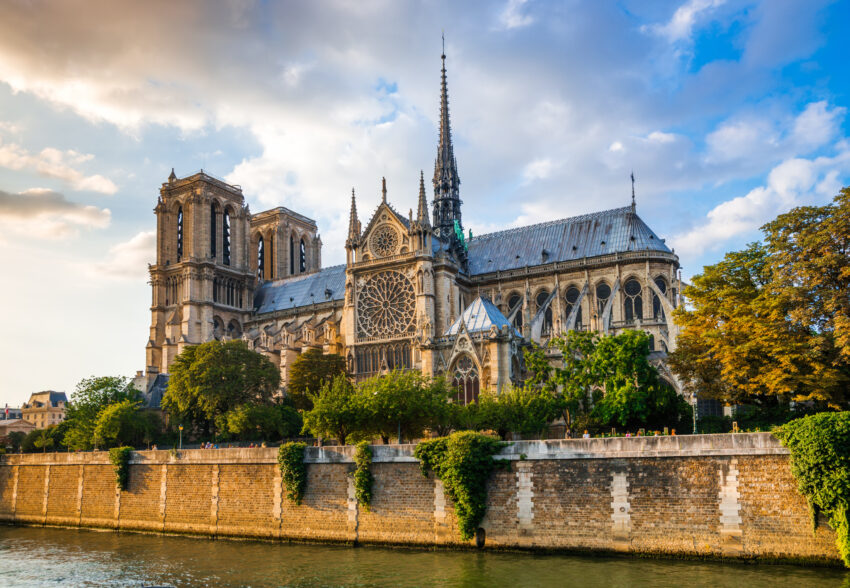Many religions are built on lofty ideas, so it follows that their places of worship also adhere to and reflect the ethereal.
At many points across history, places of worship were designed to touch upon the concept of the divine and inspire awe and renewed faith among religious adherents and the community at large. It’s no wonder, then, that many of these religious structures today represent the architectural breakthroughs and trends during the time of their construction. Here are some of the architectural marvels that also serve as a place of worship.
Hagia Sophia in Istanbul, Turkey
Considered the epitome of Byzantine architecture, the Hagia Sophia in Istanbul, Turkey has served as a cathedral, mosque, and museum during its 1,400-year history. The first church on the site of the present-day Hagia Sophia was consecrated in 360 AD, but other structures were built in its place over the course of time. The current structure as we know it is the church’s third version, which was inaugurated in 537 AD. By this time, the structure served as the principal location of Byzantine imperial ceremonies. After Constantinople came under the control of the Ottoman Empire, the Hagia Sophia was converted into a mosque and underwent extensive renovations. Then, in 1935, the structure was transformed into a museum and slowly became one of the most visited attractions in Turkey.
In 2020, the Hagia Sophia’s status was reverted to that of a mosque that can accommodate 1,000 worshippers. However, visitors can still marvel at the impressive architecture of the structure outside of prayer times. Those who wish to join the prayers in the mosque can use the Muslim Pro app to remind them of the time during their visit to Istanbul. At the same time, tourists can also use Muslim Pro to determine when they can visit the mosque without getting in the way of the worshipers.
Notre Dame Cathedral in Paris, France
The Notre Dame Cathedral in Paris, France is one of the finest examples of French Gothic architecture, and it’s also widely considered as one of the symbols of the French nation. The construction of the cathedral began in 1163 and was completed in 1260. Among the structure’s most impressive features include its rose windows, sculptural decorations, and its use of the rib vault and flying buttress, which was groundbreaking during the time. In addition to being a prime landmark in its home city and a place of worship, the cathedral also served as the site of many historic events, including the coronation of Napoleon. Victor Hugo, in an effort to save the structure from demolition after the Napoleonic wars, wrote The Hunchback of Notre-Dame and set it in the cathedral, raising public awareness about the place of worship’s decaying state.
In 2019, right in the middle of a renovation project, a portion of the Notre Dame Cathedral caught fire. Much loved by the French people, the cathedral immediately received pledges of funding that will be used for its stabilization and reconstruction. The project is expected to be completed in 2024, in time for the Summer Olympics in Paris.
Golden Temple in Amritsar, India
The Golden Temple in Amritsar, India is the preeminent shrine for the practitioners of Sikhism, but the place of worship is open to people of all faiths from all walks of life. The temple’s construction began in 1581, and many iterations of this place of worship have been constructed on the same site since. The current temple’s architecture reflects different architectural practices that were prevalent in the Indian subcontinent, with some scholars describing it as a mixture of Indo-Islamic Mughal and Hindu Rajput architecture.
The temple’s sanctum is 2 stories tall and is wrapped in gold foil. It’s surrounded by a 5-meter-deep pool and connected to the outskirts of the temple through a causeway. Among the many activities conducted in the temple is langar, a free community kitchen where anyone can partake in the vegetarian meals prepared by volunteers. The temple sees 100,000 visitors per day.
The Great Synagogue in Budapest, Hungary
Dohány Street Synagogue, also known as The Great Synagogue, is the largest synagogue in Europe. Built between 1854 and 1859, this place of worship can seat 3,000 people. The structure has a primarily Moorish design, but it also features Gothic, Romantic, and Byzantine elements. Among its most prominent features are its rose windows, richly decorated aisles, and an organ. The synagogue incurred a lot of damage during World War II, but it was restored with help from generous donations in 1996. In addition to the massive place of worship, the synagogue complex also has a museum, a temple, a cemetery, and a Holocaust memorial park.
These places of worship are not only a feast for the eyes, they are also a representation of the belief and the history of the people that belong to their respective communities. Visitors who want to enjoy these places and admire their architecture can do so, but should be mindful of the religious practices of the worshipers in the area.


